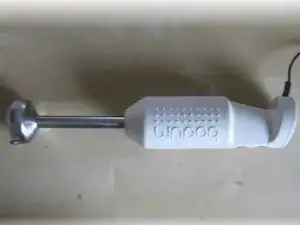
Transmission
These are some common tools used to work on this device. You might not need every tool for every procedure.
A blender is a kitchen or laboratory device that is used to mix, puree, or emulsify some combinations of substances. Blenders have been around the 1920s, but immersion blenders are a newer invention. The first immersion blender was patented by Roger Perrinjaquet on March 6, 1950. These portable hand blenders don’t have a container with blades inside like a traditional blender. Instead, they have a mixing ‘head’ with rotating blades inside of a protective covering, powered by a motor at the other end of the device. When the device is used, the motor powers the rotating blades. When the mixing head is immersed in a container, the user can move it around the container so that the blades can puree the contents of the whole area. Immersion blenders are useful because they don’t require the user to move the contents of a container into a new container in order to blend them. Volumes that are too large to fit into a traditional blender container or are too hot to safely move can be easily blended with an immersion blender.
There are two immersion blenders sold by Bodum as part of their Bistro line. They are different colors and have different item numbers and EANs (European Article Numbers). However, they seem to have identical specifications, so both are included in this page.